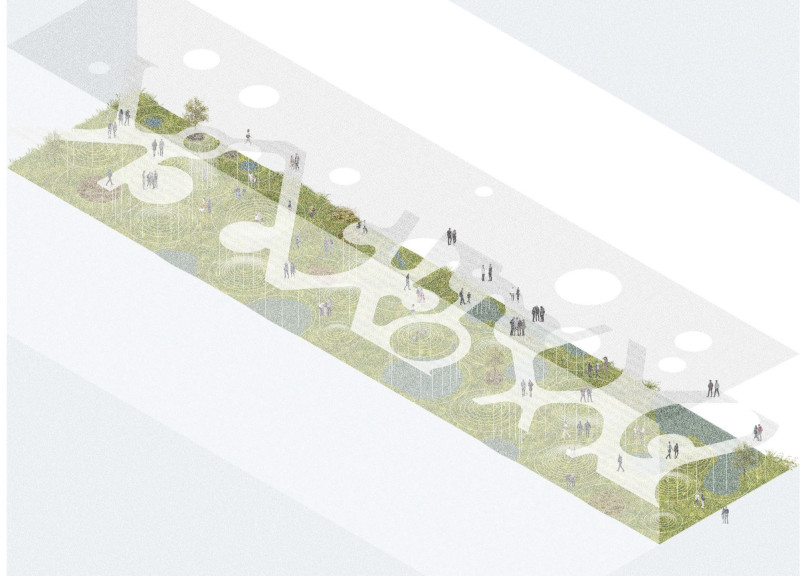5 key facts about this project
The project addresses the urban challenges faced in Berlin, particularly between Central Berlin, known for its traditional architecture, and Outer East Berlin, characterized by modern developments. It focuses on Plattenbau slab buildings that were originally constructed to alleviate housing shortages after the war. Over time, these monolithic structures have come to represent isolation, as many residents moved to more historic neighborhoods following the fall of the Berlin Wall. The goal is to revitalize these slabs and reconnect them with the community by encouraging interaction and engagement among residents.
Design Concept
The concept revolves around the transformation of Plattenbau slabs into lively community spaces. It emphasizes the interactions between people and their surroundings through the creation of soft, porous spaces that link the buildings. These in-between areas are designed to encourage social connections and can adapt to various urban contexts where similar spaces are currently underused. Each space invites individuals to foster a sense of belonging and participation, reshaping their daily experience.
Spatial Configuration
Using a straightforward slab housing format typical in areas like Lichtenberg and Marzahn, the design aims to maximize space while promoting community activities. Inspiration from the denser districts like Mitte plays a key role in shaping the ground-floor engagement, seeking to create an inviting atmosphere. The integration of concave and convex landforms fosters gathering points. The variety in height and depth expands the interaction between the landscape and users, encouraging exploration and movement.
Circulation and Interaction
Circulation routes in the design are both horizontal and vertical, facilitating easy movement throughout the site. A mesh walkway on the first floor enhances interaction by providing narrow passageways that connect different spaces above and below. This design allows residents to see and experience their environment in new ways. The focus on connectivity between spaces invites engagement, making the community feel more integrated and cohesive.
Roof Structure and Environmental Integration
The roof envelops the in-between spaces and features circular perforations that enhance visual interest. This design not only contributes to the overall appearance of the project but also strengthens the functional relationship with the surrounding environment. The strategically placed openings allow natural light to reach the communal areas below, enriching the spatial experience.
The emphasis on light and openness creates a welcoming atmosphere, highlighting the importance of community interaction and engagement. The roof becomes a defining detail, blending beauty with purpose while encouraging a vibrant social environment.



















































